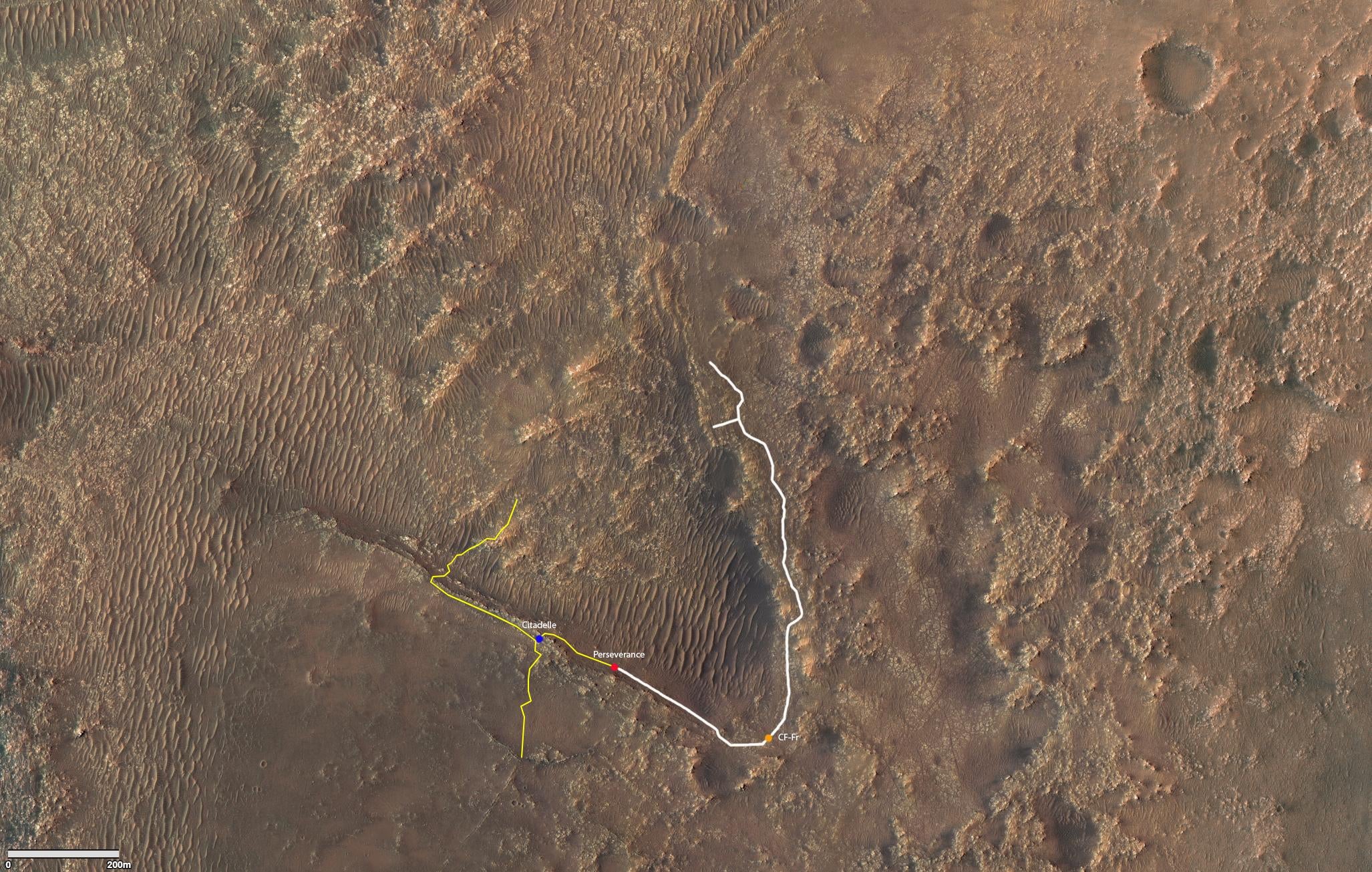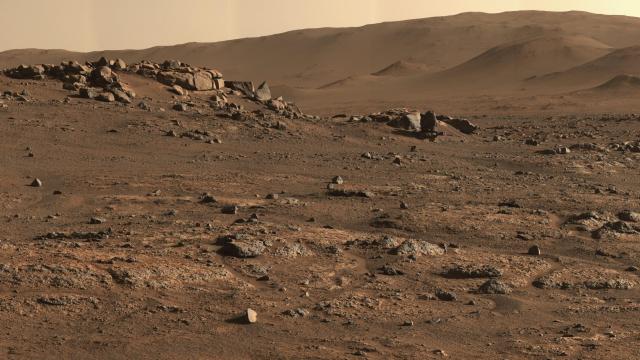Scientists at NASA were pretty excited in early August when the Perseverance rover indicated that it had drilled its first sample of Martian rock. But as it turned out, the sample tube was empty, and the Perseverance team began a remote investigation to solve the mystery of the disappearing rock.
Kenneth Farley, a project scientist at the California Institute of Technology and a member of the Perseverance team, outlined the mission’s next steps in a blog post published late last week. The rock target in question, nicknamed Roubion, crumbled into dust as the rover drilled into it. The target was a flat stone, part of the Crater Floor-Fractured Rough stretch of Jezero Crater that NASA scientists believe could hold some of the oldest information about the dried up lake bed; if not evidence of fossil life, the rock sample would at least contain information about the Red Planet’s ancient climate and geologic history.
Because the flat, polygonal target stone turned out to be unfit for sampling, Farley said that the team has pivoted to “rocks as different as possible … to allow us to test the idea that Roubion was just a poorly behaved rock.” The next target is Citadelle, an outcrop of a quarter-mile rocky ridgeline in the crater. Citadelle’s boulders are a very different sort of coring project than the finely layered sediment of the Crater Floor-Fractured Rough.

Farley said the team will likely pick out a sampling target on Citadelle and begin planning the coring this week, with the aim of sampling the outcrop around the end of August. If that attempt is successful, Citadelle’s rock will be the first of dozens of samples to be extracted from the Martian surface. NASA plans for those samples to eventually be picked up by another mission and brought to Earth in the early 2030s. All told, that mission would be one of the most ambitious in recent space exploration history, and certainly in the history of Martian exploration. If the samples are brought to Earth successfully, they will be the most distant objects in space collected by humankind.
After Citadelle, there are a couple items already on the docket for Perseverance. The rover is scheduled to check out details of the Séítah, a dune-covered swath of the crater, and it needs to eventually arrive at the delta that fans into the crater, a site that researchers believe is most promising in terms of potential astrobiology. (That hope is based on where primordial microorganisms tend to crop up on Earth — the dried-up river delta is the Martian analogue.)
But before Perseverance arrives at the delta, Farley said that the rover may head back to the fractured rough and try coring it again. There’s a chance that Perseverance just got unlucky with a particularly stubborn rock, he said, adding that the rocks from the same region that stick up from the ground could be more structurally sound and thus better sampling targets.
Perseverance’s entire mission is expected to run two years, so here’s hoping that the first sampling attempt was just a blip in an otherwise outstanding career on Mars.
